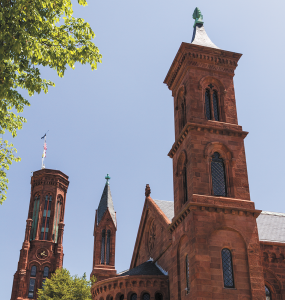Disclaimer: This article discusses the return of human remains to Native American communities
The Smithsonian Institution released a report from its Humans Remain Task Force, a group dedicated to the returning of primarily Native American bodily remains, detailing specific recommendations for how the institution should return and repatriate the over 30,000 human remains within its collections on Feb. 21.
Throughout the 19th and 20th centuries, particularly under the lead of the first curator of physical anthropology, Aleš Hrdlička, the Smithsonian collected 30,700 human body parts, including 255 brains, as well as skeletons and organs, from Native Americans, African Americans and other marginalized groups to test theories around racial differences in human beings, which modern scholars have since disproven and now consider a tenet of white supremacy. The Smithsonian established the Human Remains Task Force in April 2023 to address the future of this collection of remains after The Washington Post published an investigation into the status of the remains, and their report summarizes the task force’s recommendations for handling the remains based on ethical guidelines, centering the moral dignity of all human beings and accountability in their policy.
Ellen Stofan, the Smithsonian’s undersecretary for Science and Research and a co-chair of the Human Remains Task Force, condemned the past actions of Smithsonian researchers.
“We are looking at collections that were collected for such a heinous purpose, for trying to prove racial superiority,” Stofan told The Hoya.
Stofan said that the Smithsonian’s history of neglecting questions of consent to Native communities has created a need for the Smithsonian to take action around repatriation and reparations.
“Coming into this work, I felt a huge obligation to try to do the best we could for these people who never had a right to say what was going to happen to their bodies.”
The report’s recommendations include immediately beginning the process of returning the remains of nonconsenting parties to their descendants or tribal communities, no longer displaying human remains without proper informed consent and documentation and working to identify any descendants of the remains in the Smithsonian’s custody.
The Smithsonian first established the Repatriation Office in 1991, after the passing of the National Museum of the American Indian Act. Since then, the Smithsonian has returned around 6,300 sets of remains to tribes.
In 2000, the Smithsonian returned the brain of Ishi, thought to be the last surviving member of the Yahi group of the Yana people in Northern California. His brain to two tribes, distinct from his original tribe, that were identified as having the closest living descendants.

Sheila Hansen, a vice president of the American Indian Society, a group dedicated to honoring and socially advancing indigenous tradition and cultures, and member of the Shenandoah Shawnee tribe, said repatriation to unrecognized tribes may be difficult because of complications around how to specifically identify those tribes.
“If there was an issue with bringing bones back, we would be overlooked because we’re not state or federally recognized,” Hansen told The Hoya. “In that sense, I feel that not only the Smithsonian, but other powers to be, have fallen into that same box, that same mindset”
The federal government does not recognize more than 200 tribes.
A’lice Myers-Hall, the president of the American Indian Association and a member of the Lenape tribe, said that many Native Americans are identified simply as “Cherokee” rather than as part of their actual tribe in situations where a tribe lacks federal recognition, creating potential issues for correctly identifying remains.
“No, they’re not the bones of the Cherokee,” Myers-Hall said. “They’re the bones of the forgotten. And so these things resonate deep within us.”
In April 2023 after the Post’s investigation was published, Lonnie Bunch III, the secretary of the Smithsonian, issued an apology for the institution’s past practices.
“We acknowledge and apologize for the pain our historical practices have caused people, their families and their communities, and I look forward to the conversations this initiative will generate in helping us perform our cutting-edge research in a manner that is ripe with scholarship and conforms to the highest ethical standard,” Bunch wrote in the press release.
Matthew “Maasaw” Howard, a member of the American Indian Society and the Cherokee Nation, said despite the Smithsonian’s efforts to repatriate, he is skeptical of the institute’s intentions.
“You’ve also got to question the timing and the age of political correctness and virtue signaling, and everybody trying to get ahead of somebody else and create some new way to say, ‘Look at me, I’m politically correct,’” Howard told The Hoya. “Is this just one of those? So I’m hopeful yet skeptical based on the history of the Smithsonian.”
Stofan said she feels confident in the task force’s success.
“We have 100% institutional commitment to it,” Stofan said. “The timeline is just how much money and people can get it done as fast as possible.”
Myers-Hall said the trauma the Smithsonian has inflicted on Native communities has lasting ramifications for her community.
“One of the reasons that we really don’t go in there is because we’re spiritual people,” Myers-Hall said. “And those bones cry out; if you can imagine feeling the bones cry out, ‘Take me home, take me home, let me be in the earth.’”
Edited March 6 to correct misspelling of Ellen Stofan (previously spelled Ellen Stefano)








